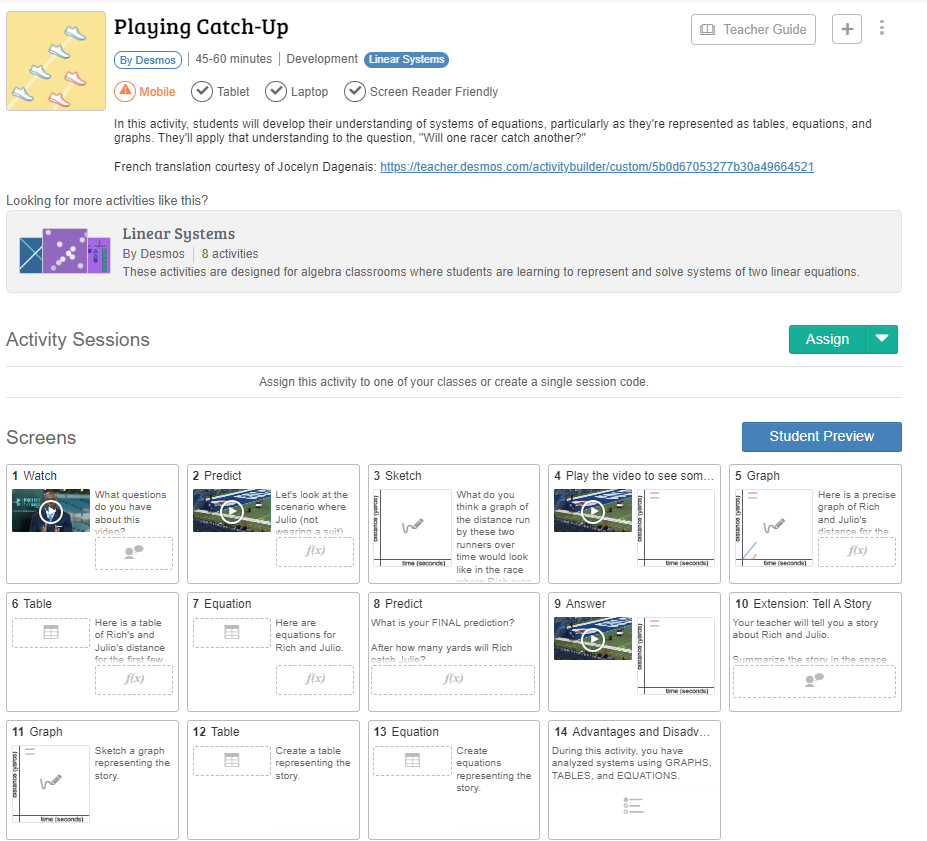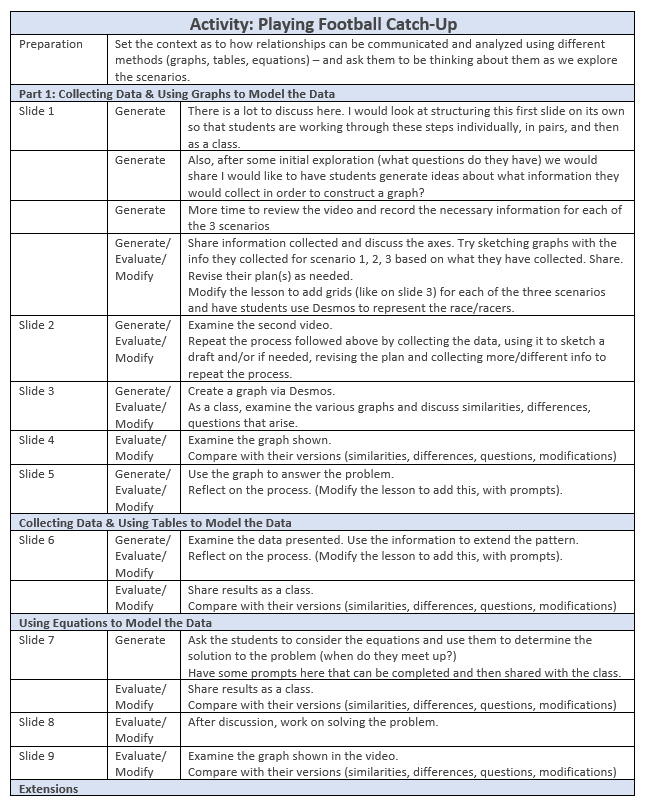Using Desmos for “Playing Catch-Up” – a T-GEM Lesson for Math 10C (AB)
Big Idea: Representing and analyzing situations allows us to notice and wonder about relationships
Curricular Competencies: Students are expected to be able to do the following:
· Reasoning and modelling
· Understanding and solving
· Communicating and representing
· Connecting and reflecting
Curricular Content Knowledge: Students are expected to know the following:
- functions and relations: connecting data, graphs, and situations
- linear functions: slope and equations of lines
- systems of linear equations
I have chosen to develop a lesson using T-GEM that focuses on developing skills and content related to relationships between variables as represented in a context. This is a heavy section in Math 10C and many struggle with it as it has lots of interconnected pieces as relationships are represented in graphs, tables, and equations. To add to the challenge, many learners are using how to operate the TI-84 graphing calculator for the first time. In the adult learning program I teach, learners are exposed to some very basic graphing and equation skills in the pre-requisite course, but moving to Math 10C is often experienced as a big jump for them.
I found an activity from the Desmos website. Desmos has teacher accounts that are free to sign up for and from there, it looks like, similar to WISE, teachers can use pre-made lessons as is, or adapt them to their own needs and goals. I found this lesson that compares two runners and focuses on relationships between related variables, using graphs, tables, and equations. It contains 14 slides as it develops the lesson. I am suggesting some modifications, but I have not actually used this platform before.

The following chart is an image that shows the progression of the activity and how it follows the T-GEM methodology. At the end of my proposed lesson, there is room for extension. The Desmos activity provides an extension scenario to model from.

One thing I have noticed with the Desmos activity, and which Khan (2012) clearly identifies also, is how the web applications, on their own, may not be effective at supporting learning since they may lack guided steps, probing questions, or support problem solving. Thus, with T-GEM the teacher role is clearly tasked with supporting the learning at each phase of the T-GEM cycle. In phase 1, the teacher supports students as they generate their ideas or models, by asking probing questions to elicit, not correct, student ideas. In phase 2, the teacher helps students evaluate their models by examining specific instances, using the student model to predict further, and testing student models to see how well they align with simulations. The teacher supports they students as they work through a process which confirms, rejects, or modifies their model. In phase 3, as students modify their ideas, teachers should inspect the modified models for accuracy. Khan’s work and the work of Clement & Rea- Ramirez (2008) indicates that using a T-GEM approach is effective in supporting student inquiry skills and conceptual understanding.
References
Clement, J. J., & Rea-Ramirez, M. A. (2008). Model-based learning and instruction in science. Neatherlands: Springer.
Khan, S. (2007). Model-based inquiries in chemistry. Science Education, 91(6), 877–905. https://doi.org/10.1002/sce.20226
Khan, S. (2011). New Pedagogies on Teaching Science with Computer Simulations. Journal of Science Education and Technology, 20(3), 215–232. https://doi.org/10.1007/s10956-010-9247-2
Khan, S. (2012). A Hidden GEM: A pedagogical approach to using technology to teach global warming. Source. The Science Teacher, 79(8), 59-62. https://www.jstor.org/stable/43557744
